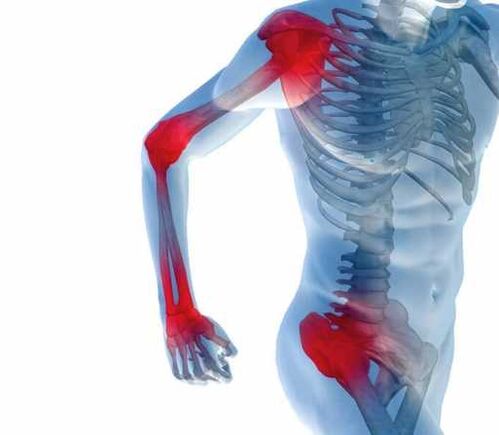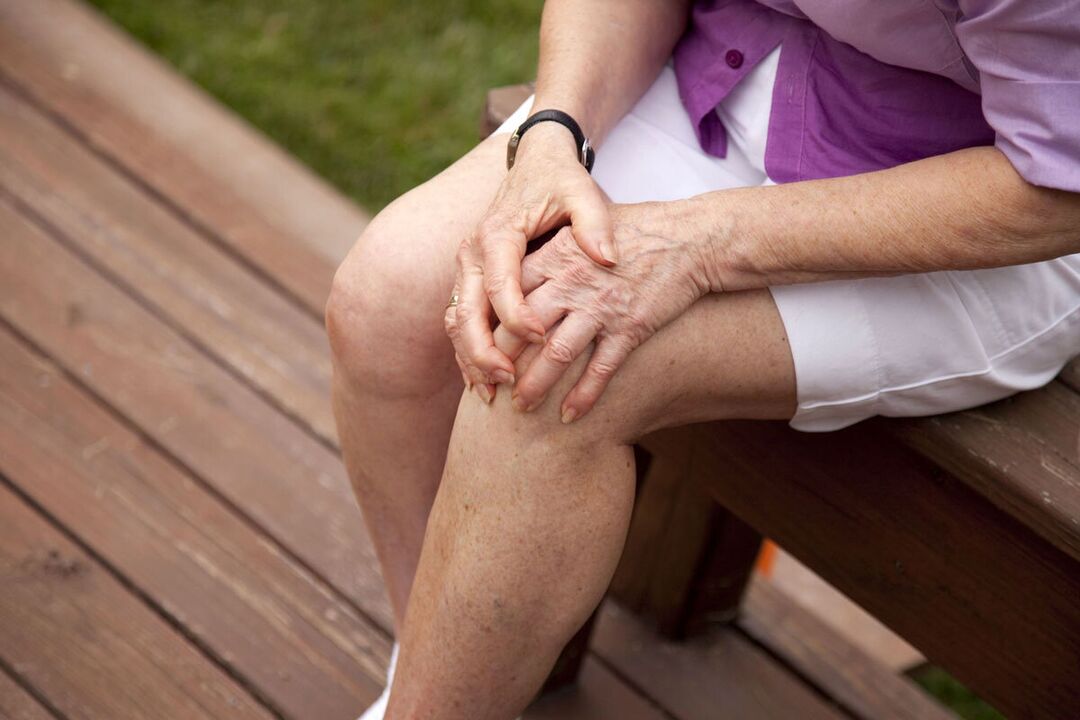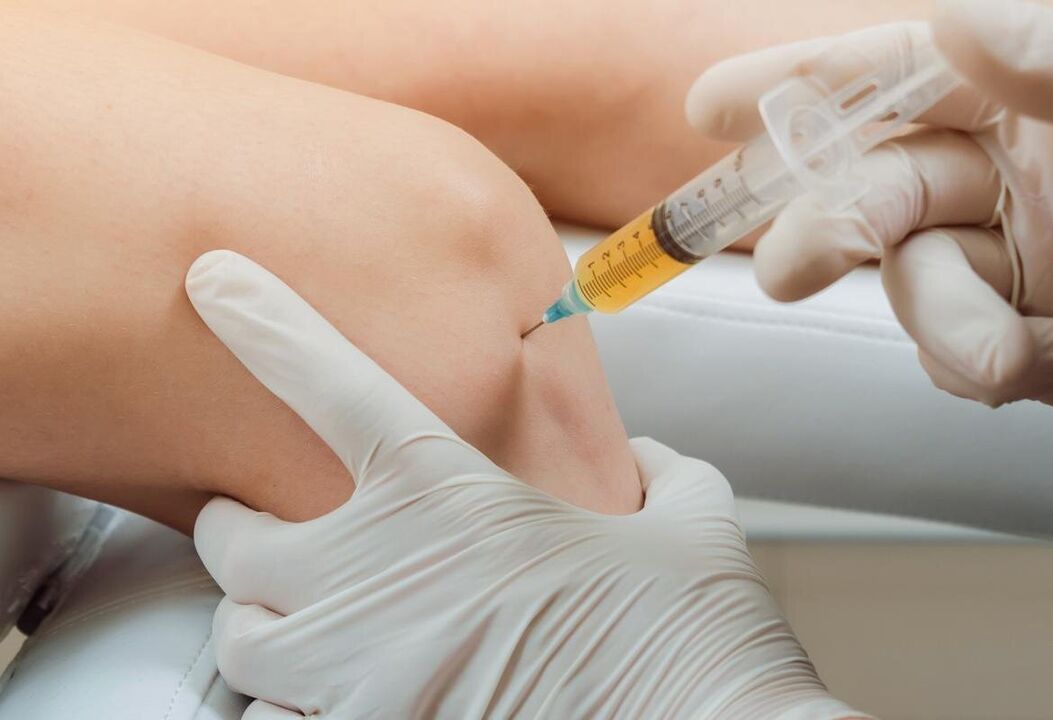
joint pain(arthralgia) can occur in a single joint or in multiple joints at the same time (polyarthralgia). Arthralgia is observed in rheumatic, endocrine, infectious, tumor, neurological, autoimmune diseases, injuries and obesity. The clarification of the causes of joint pain is of important differential diagnostic importance; carried out using X-ray, ultrasound, laboratory, invasive methods (arthrocentesis, arthroscopy). Treatment for arthralgia is reduced to treating the disease that caused it. Symptomatic measures are used (analgesics, local heat, ointments), immobilization, physiotherapy, surgical intervention.
classification
Arthralgia differ in localization and depth, number of affected joints, type and intensity of pain syndrome, daily rhythm, duration of existence, connection with a certain type of movement. With pain in a single joint, they speak of monoarthralgia, with simultaneous or sequential pain syndrome in several joints - of oligoarthralgia, with the involvement of 5 or more joints - of polyarthralgia syndrome.
Depending on the type of arthralgic syndrome, acute and dull pain are distinguished; by intensity - from weak and moderate to intense; depending on the type of flow - temporary and constant. Arthralgia occurs more often in large joints - hip, knee, shoulder and elbow, less often in medium and small - wrist, ankle, interphalangeal.
The appearance of pain in the joints is promoted by irritation of the neuroreceptors of the synovial membranes of the joint capsules with inflammatory mediators, products of immune reactions, salt crystals, toxins, osteophytes. In rheumatology, it is customary to distinguish the following types of joint pain:
- caused by toxic syndrome in acute infections;
- primary episode or intermittent (intermittent) arthralgia in acute or recurrent arthritis;
- long-term monoarthralgia of large joints;
- oligo- or polyarthralgia syndrome associated with the involvement of the synovial membranes or progressive degenerative-dystrophic changes in the cartilage;
- residual post-inflammatory or post-traumatic arthralgia in the joints;
- pseudoarthralgia.
Why do joints hurt
Common infectious diseases
Arthralgic syndrome often accompanies the course of acute infections. Joint pain can be observed both in the prodromal phase of the disease and in the early clinical stage, which occurs with fever and intoxication. The infectious form of arthralgia is characterized by "pain" in the joints of the lower and upper extremities, the polyarticular nature of the pain and its association with myalgia. Mobility in the joint is fully preserved. Usually, infectious arthralgia disappears within a few days, when the toxic syndrome caused by the underlying disease is weakened.
Infectious arthritis
Possible options for the development of postinfectious reactive arthralgia after acute intestinal or urogenital infections; parainfectious arthralgic syndrome caused by tuberculosis, infective endocarditis, secondary syphilis. Often the causes of pain in the joints are the foci of the existing chronic infection - pyelonephritis, cholangitis, adnexitis, paratonsillar abscess or parasitic invasion.
Residual arthralgia after inflammation of the joints is chronic or transient. Pain and stiffness in the joints can last for weeks or months; In the future, the well-being and functions of the limbs are fully restored. With the chronic form of arthralgia, its exacerbations are associated with overwork, meteorological lability and hypothermia.

Rheumatic diseases
Joint pain of the poly- or ologarthralgia type is the main symptom of inflammatory rheumatic diseases. Rheumatic arthralgia is characterized by a constant, intense, migratory pain syndrome, involvement of large joints, mainly the lower extremities, limited movement in the joints.
The debut of rheumatoid arthritis, as well as systemic rheumatic diseases, are manifested in a polyarticular syndrome affecting small symmetrical joints of the feet and hands and morning motor stiffness.
In microcrystalline gouty arthritis, arthralgia manifests itself in the form of recurrent paroxysmal pain in an isolated joint, which, after sudden onset, quickly reaches a maximum intensity and does not subside for several days.
Degenerative joint lesions
Gradually increasing pain in the joints over a long period of time may indicate deforming osteoarthritis and other degenerative-dystrophic lesions. Typical here is an involvement of the knee or hip joint; dull, aching, exercise-related pain and its disappearance at rest. Depending on the weather, joint pain, accompanied by a "crunching" of the joints during movement, can be alleviated with local distraction therapy.
joint injuries
Bruises, dislocations of the joints, damage to the ligaments, intra-articular fractures are accompanied by severe pain. The affected joint swells, deforms, and feels hot. The support function of the lower limb is impaired, movement in the joint becomes difficult, and sometimes pathological mobility occurs. Injuries can be accompanied by bleeding into the joint cavity, which leads to its stiffness.
oncological diseases
Persistent oligo- and polyarthralgias with a long course, accompanied by the formation of "hippocratic fingers" (deformations of the nails and terminal limbs like "watch glass" and "drumsticks") indicate a paraneoplastic lesion of the synovial membranes. In such patients, an oncological pathology of theinternal organs, mainly lung cancer, are suspected.
endocrine diseases
Common causes of joint pain are endocrine disorders - primary hyperparathyroidism, ovariogenic dysfunction, hypothyroidism, obesity. Articular syndrome of endocrine genesis proceeds in the form of oligoarthralgia associated with ossalgia, myalgia, pain in the pelvic bones and spine.
Different reasons
Other possible causes of arthralgia include:
- Poisoning with heavy metals (thallium, beryllium);
- frequent overload or microtrauma of the joints;
- long-term drug therapy;
- postallergic reactions;
- flat feet;
- X-shaped or O-shaped deformation of the limbs;
- Pseudoarthralgia simulated by primary ossalgia, neuralgia, myalgia, vascular pathology, psychosomatic disorders.
diagnosis
Since joint pain is only a subjective symptom, clinical and anamnestic characteristics as well as the physical examination are in the foreground when determining the cause. It is necessary to consult a rheumatologist, orthopedist. To differentiate the etiology of arthralgia, a number of objective studies are conducted:
- X-ray of the joints.It is a routine method that allows you to examine any joint in various diseases. Most often, radiography is performed in one or two projections, it is also possible to study in a special styling and perform contrast arthrography. A more detailed picture of the state of the osteochondral and soft tissues of the joints is available with CT and MRI imaging.
- Common ultrasound.Allows detection of effusions in the joint cavity, bone erosion, changes in the synovial membrane and measurement of the width of the joint spaces. The availability of sonography makes it indispensable for the diagnosis of rheumatic joint diseases.
- invasive methods.Depending on the indication, a puncture of the joint, a biopsy of the synovial membrane is performed. In disputed cases, diagnostic arthroscopy is performed, which makes it possible to examine the joint cavity from the inside in order to carry out diagnostic and therapeutic measures.
- laboratory tests.Helps to detect the presence of an inflammatory process,rheumatic diseases. In the peripheral blood, the ESR, the content of C-reactive protein, uric acid, specific markers of immunopathology (rheumatoid factor, antinuclear antibodies, ACCP) are determined. An important diagnostic method is the microbiological and cytological examination of the synovial fluid.
- Additional diagnostic methods:Thermography, Podography.

treatment
Help before diagnosis
With pain in the joints, it is necessary to remain calm and not to strain the limb. Metabolic causes of arthralgia require a balanced diet and weight normalization. With fresh injuries, it is necessary to apply cold to the joint, immobilize the injured limb with a splint or fixing bandage. You can take pain relievers or NSAIDs.
Neglect of competent examination and treatment of arthralgia is fraught with the development of irreversible dysfunction of the joints - stiffness, ankylosis, contracture. Since pain in the joints can serve as a marker for a variety of diseases, it is necessary to consult a doctor if joint syndrome occurs and lasts more than 2 days.
Conservative therapy
In the treatment of joint pain, the main role is played by the treatment of the leading pathology. Drug treatment of arthralgia is aimed at stopping inflammatory intra-articular processes and pain. Systemic therapy includes the use of nonsteroidal anti-inflammatory drugs.
With moderate arthralgia or contraindications to oral administration of drugs, local external therapy with warming, anti-inflammatory and analgesic ointments is carried out. Applications with dimethyl sulfoxide are applied to the joint area. Joint gymnastics, physiotherapeutic procedures (drug electrophoresis, magnetotherapy, phonophoresis, UHF therapy) are recommended.
If necessary, periarticular blockades, intra-articular injections of glucocorticoids, chondroprotectors, synovial fluid prostheses are performed. Promising modern therapeutic methods for chronic joint diseases are ozone therapy, plasma lifting of the joints and orthokine therapy.
surgery
Various types of surgical interventions are warranted for joint pain caused by injury, as well as chronic diseases that lead to loss of joint function. They can be performed openly (arthrotomy) or endoscopically (arthroscopy). Depending on the causative disease, the following measures are carried out:
- arthroplasty;
- arthrodesis;
- ligament plastic;
- joint cavity rehabilitation;
- Removal of pathological formations (cysts, intra-articular bodies);
- synovectomy;
- joint arthroplasty.
























